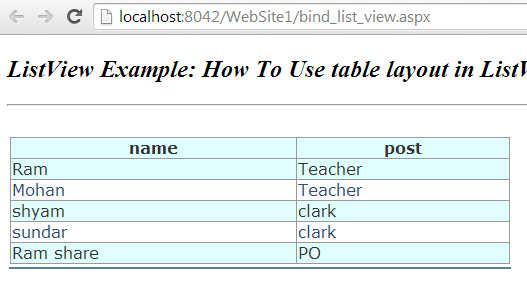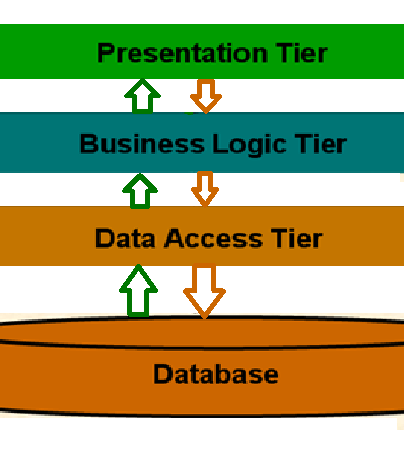How can I get values of dynamically created text boxes and save it to a SQL table?
Values of dynamically created text boxes and save it to a SQL:
ASP.NET includes a number of controls specifically designed for displaying data. We'll focus on the GridView control, but other data controls include the ListView, DataList, Repeater, DetailsView, and FormView.
The GridView control displays columns and rows of data and allows sorting and paging. It is by far the most popular data display control, and is ideal for understanding how data display controls interact with data-retrieval controls and code. The GridView control allows the user to click on a column header to sort the data.
GridViews also let you present just a small subset of the data at one time, called a page, with links for easy access to other pages-this process is called "paging" through data. You can do these, and for numerous other data manipulations, with very little programming. A GridView with data from the AdventureWorks database is shown ,
"This GridView control displays data from the AdventureWorks database in a table format that makes it easier to read, and allows users to click the column headings to sort the data.".
The other data controls mentioned here are used in scenarios where a straight, tabular display of data is not what you are looking for.
The DetailsView control is used for displaying the data one record at a time. The FormView is used to for displaying a single record in a master/detail relationship. The ListView (which is new in version 3.5 of the .NET Framework), DataList and Repeater controls offer the maximum flexibility for displaying data. These three controls have no inherent look of their own, but require that you, the developer, construct templates that describe how the data will appear.
The ListView, in particular, offers all the features of the GridView, including paging, sorting, data update, and so on, with unlimited display flexibility. You can use it to display repeating data in a nontabular format or to group records according to some criteria.


Comments
Post a Comment